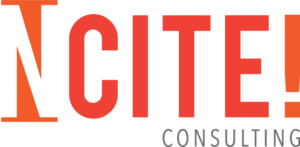Did you know April is National Financial Literacy Month?
In 2003, the US Senate officially designated April as National Financial Literacy Month, and in celebration of financial education, I thought I’d take some time to run through a few of the basics. Nonprofit employees working in development or operations will find this article the most useful, but I think it’s good for all staff to have a general understanding of organizational finances.
That’s where I come in.
We’re going to cover how to read and understand the following financial documents:
- Balance Sheet
- Cash Flow Statement
- Income Statement
As we read through these statements, it’s important not to get stuck on individual line items because these items will change depending on the organization. Instead, focus on the overall structure of the statements.
Okay, now that we’ve got that all handled…
Ready? Let’s go!
I. Balance Sheet
The Balance Sheet provides a glimpse of an organization’s financial standing at a specific moment. Usually, the sheet is split across the middle or straight down the center with one portion reflecting assets, and the other reflecting liabilities and net assets. Two dated columns give the numerical value of an asset, liability, and net assets on those specific dates.
Balance Sheet Example:
If the name isn’t already given this way, yes, the balance sheet should always be in balance.
What do I mean by always in balance?
Assets should always equal Liabilities plus Net Assets.
(Assets=Liabilities + Net Assets)
Assets are anything of value owned by a nonprofit such as cash, furniture, office supplies, or grants. They’ll be listed based on liquidity, meaning how quickly they can be converted into cash. Assets with the most liquidity will be listed first and are known as Current Assets.
Other assets are Non-Current Assets (long-term assets) and have the least liquidity.
Liabilities are debts such as payroll, loans, or utility payments. Current Liabilities are a debts due to the debtor within a year, and non-current liabilities are debts not due within a year.
Net Assets are any remaining assets after liabilities have been considered. On the Balance Sheet, they’ll be split into either Restricted or Unrestricted because certain assets you won’t have access to until a certain date or you can only use for a specific purpose.
When examined by an organization, the balance sheet can tell you where you’ve grown and where you need to improve. Using this information, staff can develop strategies around their mission to improve their impact while ensuring the organization is healthy. For example, in the Balance Sheet below, Non-Current Assets increased in 2022 while Current Assets decreased, meaning less liquidation within the year and less cash.
How could this affect your programming or end-of-year fundraising goals?
II. Cash Flow Statement
A Cash Flow Statement shows you what happened to your cash during a specific period of time and shows the financial health of a nonprofit. This is all based on how much cash is flowing in and out hence the name of this statement.
When looking at a Cash Flow Statement, at the very bottom of our example, you’ll find the Cash & Cash Equivalents for the beginning of the year, the Net Increase (or Decrease) in Cash & Cash Equivalents for that same year and the Cash & Cash Flow Equivalent for the end of year.
Cash Flow Statement Example-
Because we’re keeping it simple, cash flow can either be positive (there is more cash flowing in than expected) or negative (there is more cash flowing out than expected).
You’ll notice the statement is divided into three primary sections: (1) Operating Activities, (2) Investing Activities and (3) Financing Activities. Each section gives insight into a certain type of cash flow.
For example, Operating Activities are revenue and expenses created from the nonprofit’s standard operations. Investing Activities is any money gained from buying or selling assets. Financing Activities are any debt or equity gained from financing including issuing bonds or repaying an existing loan.
Reading through a cash flow statement, you can determine which of your activities are generating or losing the organization money. For example, using the sample above, you can see that Operating Activities are generating the most money. Maybe your team needs to brainstorm how Investing and Financing Activities can contribute more.
Simultaneously, if Operating Activities are creating extra money, are there enough additional funds in the budget to expand a program?
III. Income Statement
Income Statements are the financial statements that summarize revenue, expenses and gross receipts (money raised before expenses are taken out). Unlike the Cash Flow Statement, Income Statements only reflect an organization’s operating activities.
Income Statement Example:
Using an income statement, you can see where your expenses are high, how much you’re paying to provide a service, and what residual money you may have to further invest in your mission. Like with the Balance Sheet, Revenue and Expenses should be broken down into Restricted and Unrestricted categories.
Generally speaking, there are two ways to analyze an income statement: vertically or horizontally. Because our sample is simple, we’re going to read straight down.
We can see that most of our end-of-year assets are unrestricted. Are we happy with that number or do we want more flexibility with our cash? If yes, what organizational changes do we need to make to gain more Unrestricted funds?
I can help you answer these questions.
One of the services I offer is Finance Training. If you’re interested in learning more about how I can support your nonprofit’s financial journey, schedule a free thirty-minute consultation with me to determine how I can help you achieve your financial goals.
Happy National Financial Literacy Month!





